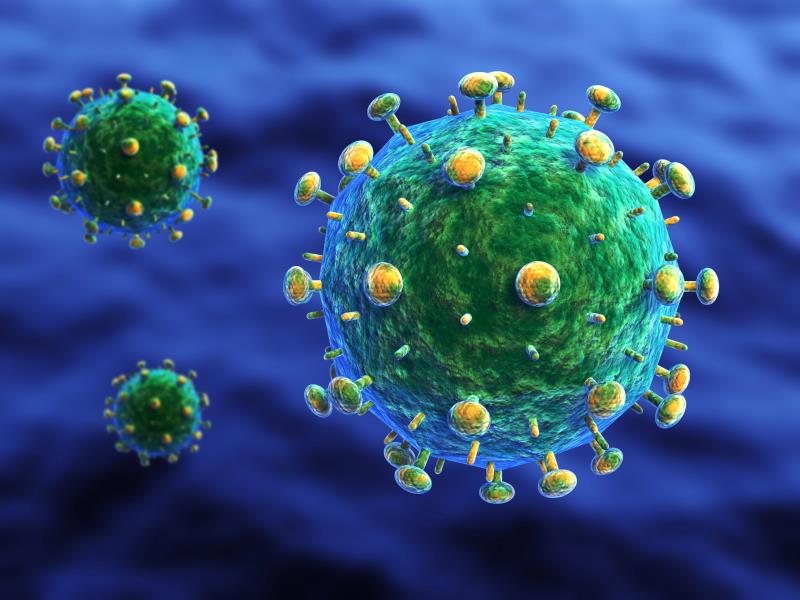ADVANCE update: TAF/FTC + DTG regimen comparable to SoC for HIV-1 viral suppression





HIV-1 RNA viral suppression is comparable between tenofovir alafenamide (TAF)/emtricitabine (FTC) + dolutegravir (DTG), tenofovir disoproxil fumarate (TDF)/FTC + DTG, and TDF/FTC/efavirenz (EFV) regimens, according to updated results of the ADVANCE trial.
However, certain findings suggest that TAF/FTC + DTG is best limited to a certain patient population, said Dr Simiso Sokhela from Ezintsha, Wits Reproductive Health and HIV Institute, Johannesburg, South Africa, who presented the results at AIDS 2020.
A total of 1,053 treatment-naïve individuals aged ≥12 years with HIV (HIV-1 RNA >500 copies/mL; median age 32 years, 59 percent female, 99 percent black) from South Africa were randomized 1:1:1 to receive TAF/FTC + DTG, TDF/FTC + DTG, or the standard of care (SoC) TDF/FTC/EFV for 192 weeks. Pregnant women and individuals with tuberculosis were excluded. At baseline, median BMI was 24.1 kg/m2 and mean CD4+ count was 336 cells/uL. A majority of the patients had HIV RNA <100,000 copies/mL.
At week 96, viral suppression (HIV-1 RNA level <50 copies/mL) was achieved by a comparable proportion of patients in the TAF/FTC + DTG (78.6 percent), TDF/FTC + DTG (78.3 percent), and TDF/FTC/EFV arms (73.5 percent). [AIDS 2020, abstract OAXLB0104]
“Participants in the two DTG arms achieved viral suppression faster than those in the SoC arm. But by week 24, the proportion of participants with HIV-1 RNA level <50 copies/mL was similar across all arms. This similarity was maintained up to week 96,” said Sokhela.
Virological failure was rare across all arms (3, 5, and 6 percent of TAF/FTC + DTG, TDF/FTC + DTG, and TDF/FTC/EFV arms, respectively). Treatment-emergent NRTI or NNRTI* mutations only occurred in the TDF/FTC + DTG and TDF/FTC/EFV arms (two and 13 patients, respectively).
Of the 244 treatment failures (HIV-1 RNA ≥50 copies/mL at week 96), 84 percent (n=206) occurred due to treatment discontinuation.
Serious adverse events (AEs) were slightly more common in the TDF/FTC/EFV (9 percent) compared with TAF/FTC + DTG or TDF/FTC + DTG arms (6 percent each). Grade 3/4 AEs occurred in 15, 17, and 27 percent of TAF/FTC + DTG, TDF/FTC + DTG, and TDF/FTC/EFV recipients, respectively, with the higher rate in the latter group driven mainly by short-term increases in liver enzyme levels. Grade 3/4 laboratory abnormalities were also more common in the TDF/FTC/EFV arm. Grade 3/4 creatinine clearance AEs were more common in the TDF/FTC + DTG arm (13 percent) vs the TAF/FTC + DTG or TDF/FTC/EFV arms (2 and 4 percent, respectively).
There was one death in the TAF/FTC + DTG arm and two deaths each in the TDF/FTC + DTG and TDF/FTC/EFV arms, none of which were deemed related to the investigational drugs.
Bone, metabolic outcomes
Development of hip or lumbar spine osteopenia at week 96 was least frequent in the TAF/FTC + DTG arm (5 and 16 percent, respectively) compared with the TDF/FTC + DTG (8 and 20 percent) and TDF/FTC/EFV arms (11 and 22 percent).
At week 96, weight gain was greatest among men on TAF/FTC + DTG compared with TDF/FTC + DTG or TDF/FTC/EFV (mean increase 5.2, 3.6, and 1.4 kg, respectively), as well as women on TAF/FTC + DTG vs TDF/FTC + DTG or TDF/FTC/EFV (mean increase 8.2, 4.6, and 3.2 kg, respectively). Incomplete data suggest this upward trajectory continues until week 144, said Sokhela.
Changes in body composition at week 96 were more pronounced in women than men, with a significantly higher increase in fat mass in women vs men (p<0.001). “Mass increases were largely fat over lean gain and were distributed between trunk and limbs across all three arms,” she said. Treatment-emergent metabolic syndrome was also significantly more common in the TAF/FTC + DTG compared with the TDF/FTC/EFV arm (8.4 percent vs 3.9 percent; p=0.03).
Real-world applicability
“This trial demonstrated similar HIV viral suppression rates across all three arms. Participants in the TAF/FTC + DTG arm had significantly higher mean rises in body weight, greater rises in trunk fat, and a higher risk of metabolic syndrome, and this was more for women than men,” said Sokhela.
“These results present a complexity for developing world programmes as we transition to DTG-based regimens. [They also] support the WHO treatment guidelines reserving TAF and DTG for patients with osteoporosis or impaired renal function,” she added.